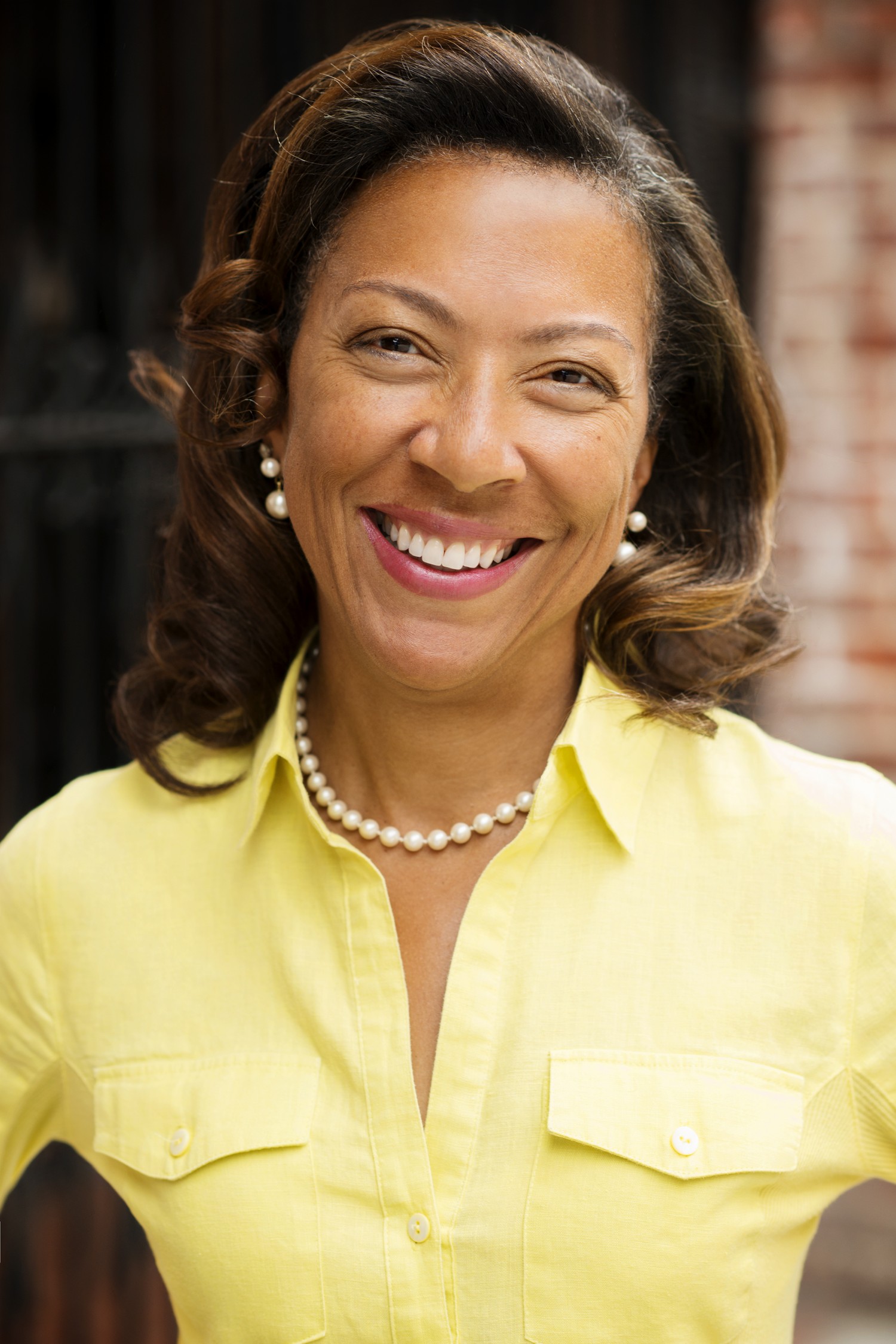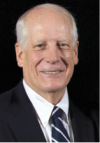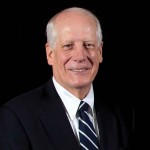Message from the Chair
 Like all of you, this past tax season I gathered my receipts, calculated my capital gains, and resigned myself to Ben Franklin’s astute and timeless 1789 observation, “…[I]n this world nothing can be said to be certain, except death and taxes.”
Like all of you, this past tax season I gathered my receipts, calculated my capital gains, and resigned myself to Ben Franklin’s astute and timeless 1789 observation, “…[I]n this world nothing can be said to be certain, except death and taxes.”
At the risk of offending one of our Founding Fathers, to this short list of life’s inevitabilities, I’d suggest we add “Change.” Look around you. Blockbuster to Netflix, empty nest to a boomerang young adult in your basement, Jay to Jimmy on late night TV—if you can’t embrace change, you can’t embrace life.
Change is also in the air here at OMIC. What a delight to be stepping into the shoes of my oculoplastic’s colleague and mentor, John Shore, as I assume Chair of the Board for the next two years. Dr. Shore has handed me the reins of a company enjoying unparalleled success in the medical malpractice marketplace. Of all U.S. ophthalmologists who can choose their malpractice carrier, nearly half choose OMIC. How have we become the undisputed leader in ophthalmic risk management and claims adjudication? Teamwork and the deep bench comprised of our San Francisco-based staff of 45 loyal staff captained by President and Chief Executive Officer Tim Padovese; the dedicated and insightful ophthalmologist board and committee members, past and present; collaborative engagement of our sponsor, the American Academy of Ophthalmology; and most importantly the faith, feedback, and trust of you, our insured physician owners.
I became an OMIC insured 16 years ago, when fresh out of fellowship and without getting competitive quotes or considering other companies, I staked my professional liability with OMIC based on no more than brand recognition and the endorsement of the American Academy of Ophthalmology. This could have been a potentially poor business decision (I mean, who doesn’t bid out one of the largest expenses for a doctor just starting out in practice?). But it ended up being one of the greatest professional choices I ever made.
While these are exceptional times for our company, I recall the growing pains we had during my first few Board meetings in the early 2000s. It was a tense time for medical liability insurers; many exited what had become an increasingly unprofitable marketplace while others simply became insolvent. Displaced ophthalmologists looking for a safe haven found one with OMIC. We were a smaller company then and absorbing these displaced doctors put considerable pressure on our performance measures. Our seasoned executives, financial advisors, and physician board members made calculated and at times difficult decisions that allowed us not only to grow our insured count but maintain and improve our fiscal health as well. A.M. Best rewarded OMIC’s sound decision-making by upgrading our financial stability rating to “A” (Excellent) in 2007, a rating we have maintained every year since then.
Ophthalmologists who placed their professional liability faith in OMIC are being rewarded for their loyalty. In 2014, OMIC is providing a 25% dividend for all active policyholders. Upon application of this dividend, OMIC will have returned more than $30 million to policyholders over the past five years. While you can always count on OMIC’s prudent corporate governance, there will undoubtedly come a time in this inherently cyclical business when we will again face headwinds. As your new Chair, I promise you that with OMIC, you are in no better hands to weather whatever change or challenge lies ahead. Now, if only OMIC could help decipher the U.S. tax code.
Tamara R. Fountain, MD, Chair of the Board
Message from the Chairman addresses elimination of surcharge for facelift, rhinoplasty, and full body liposuction
Digest, Spring 2013
The story of how OMIC arrived at the decision to eliminate the surcharge for ophthalmologists who perform facelift, rhinoplasty, and full body liposuction (see Eye on OMIC) tells us much about how the company balances the risk of providing coverage for procedures ophthalmologists perform with rates the company must charge to cover that risk. The assessment is difficult for many reasons, the primary one being the need to determine the risk of a given procedure or group of procedures. In assessing risk, one must take into account underwriting guidelines the company uses to determine for whom it will provide coverage. If untrained or poorly trained physicians are allowed coverage, the risk—and therefore the rates—will be high. If the company underwrites physicians who are well trained and who meet acceptable standards of practice, the rates may be lower as long as claims remain at an acceptable level.
Fifteen years have passed since the OMIC Board responded to requests by ophthalmologists to provide coverage for total body liposuction and full facelifts for cosmetic reasons. Initially, OMIC had difficulty setting rates for these procedures because claims data was lacking, and there were no proven underwriting criteria that allowed staff to determine who should be insured. Accordingly, premiums were based on average rates charged by other carriers for cosmetic procedures. OMIC selected a 200% surcharge for coverage of full facelifts and a 160% surcharge for coverage of liposuction. Staff immediately developed underwriting criteria and simultaneously began monitoring claims and tracking incident reports for these procedures. This information was reviewed periodically. Over time, the data confirmed that OMIC’s experience was sufficiently favorable that a rate reduction to 150% of basic premium (i.e., a 50% surcharge) could be adopted. This rate went into effect in 2006. Coverage for rhinoplasty, subject to review and approval of a supplemental questionnaire, adherence to underwriting requirements, and payment of the 50% cosmetic surcharge, was added in late 2008.
OMIC’s conservative approach to underwriting and strong claims performance compared to its peer companies has allowed OMIC to provide coverage for members of the American Academy of Ophthalmology at competitive rates and to embrace new procedures as ophthalmologists begin to perform them. PRK, LASIK, refractive lens exchange, Intacs, facelifts, rhinoplasty, and total body liposuction are examples of procedures OMIC covers at standard rates without surcharge. Elimination of the surcharge means a significant rate reduction for ophthalmologists who perform these procedures. This is good news for those now insured by OMIC and those considering a switch to OMIC and demonstrates how OMIC works on behalf of Academy members to provide coverage at reasonable rates for the work ophthalmologists are doing.
John W. Shore, MD, Chairman of the Board
Reflections on Being Chairman
 My three-year tenure as OMIC’s Chairman concludes December 2013 as does my 15 years on OMIC’s Board and Committees. As I leave, a final and pleasant duty is to announce that Tamara R. Fountain, MD, will succeed me as your new Chair, effective January 1. Dr. Fountain’s experience, skills, and accomplishments are set forth fully in Eye on OMIC.
My three-year tenure as OMIC’s Chairman concludes December 2013 as does my 15 years on OMIC’s Board and Committees. As I leave, a final and pleasant duty is to announce that Tamara R. Fountain, MD, will succeed me as your new Chair, effective January 1. Dr. Fountain’s experience, skills, and accomplishments are set forth fully in Eye on OMIC.
In 1999, when I was invited to serve as an OMIC committee member, I knew nothing about professional medical liability insurance and even less about the company and staff working behind the scenes to provide this essential coverage. After my first OMIC Board of Directors’ meeting, I returned to my practice in Austin, Texas, with an appreciation of the dedication, experience, and breadth of knowledge of OMIC staff and their close working relationship with board and committee members. I came to realize that the dedicated staff is the foundation that makes OMIC such a strong company able to serve our members and the profession so well. I wish to acknowledge all the staff from those who carry the responsibility of leading the company to those who do the detailed work involved in managing hundreds of claims, providing daily risk management advice, handling policies for 4,500 insureds, and accounting for hundreds of millions of premium dollars. I am grateful for all I have learned from the staff and appreciate their individual and collective efforts.
Supporting OMIC’s staff is an elite team of advisors and consultants who provide the critical actuarial, investment, reinsurance, and legal advice and expertise that has been instrumental in OMIC maintaining an A (Excellent) rating from A.M. Best since 2007. Many of these advisors have been with OMIC since the beginning and take great pride in their role in bringing about its success.
While serving on various standing committees (Underwriting, Claims, Risk Management, Finance), I witnessed this central tenet: OMIC will not settle a claim without the consent of the insured and will fight tirelessly when a strong defense is justified and the case is defensible. One extraordinary case involved defense costs in excess of $1 million, multiple jury trials, several appeals to a state supreme court, and 20 years of litigation before a final resolution was reached in favor of the defense. Throughout this long ordeal, OMIC stood by the insured. Having been the subject of a lawsuit myself, I speak from personal experience when I say that your livelihood, self esteem, and assets are only as safe as the company insuring you. With OMIC, you are assured of claims specialists and defense lawyers who are experienced in handling ophthalmic claims, Board members who are practicing ophthalmologists reviewing these claims, and a financially strong company that is able to endure even if a claim goes on for decades.
I’ve also come to appreciate the collaborative efforts of OMIC and the American Academy of Ophthalmology to improve patient care and minimize liability risks. Whether developing informed consent and wrong site/wrong IOL courses, establishing cooperative venture programs, or providing best practices, the staff of both organizations work jointly and cooperatively. OMIC could not have had better allies and stronger supporters to facilitate this collaboration than Academy Executive Vice Presidents Bruce E. Spivey, MD, H. Dunbar Hoskins Jr., MD, and David W. Parke II, MD.
Reflecting on my three years as Chairman, I realize I have gained more than I have given, learned more than I have taught, and had a lot of fun along the way. I leave the company in great hands and with thanks to those who have helped me along the way.
John W. Shore, MD, Chairman of the Board
Why OMIC eliminated the surcharge for cosmetic procedures
 The story of how OMIC arrived at the decision to eliminate the surcharge for ophthalmologists who perform facelift, rhinoplasty, and full body liposuction (see Eye on OMIC) tells us much about how the company balances the risk of providing coverage for procedures ophthalmologists perform with rates the company must charge to cover that risk. The assessment is difficult for many reasons, the primary one being the need to determine the risk of a given procedure or group of procedures. In assessing risk, one must take into account underwriting guidelines the company uses to determine for whom it will provide coverage. If untrained or poorly trained physicians are allowed coverage, the risk—and therefore the rates—will be high. If the company underwrites physicians who are well trained and who meet acceptable standards of practice, the rates may be lower as long as claims remain at an acceptable level.
The story of how OMIC arrived at the decision to eliminate the surcharge for ophthalmologists who perform facelift, rhinoplasty, and full body liposuction (see Eye on OMIC) tells us much about how the company balances the risk of providing coverage for procedures ophthalmologists perform with rates the company must charge to cover that risk. The assessment is difficult for many reasons, the primary one being the need to determine the risk of a given procedure or group of procedures. In assessing risk, one must take into account underwriting guidelines the company uses to determine for whom it will provide coverage. If untrained or poorly trained physicians are allowed coverage, the risk—and therefore the rates—will be high. If the company underwrites physicians who are well trained and who meet acceptable standards of practice, the rates may be lower as long as claims remain at an acceptable level.
Fifteen years have passed since the OMIC Board responded to requests by ophthalmologists to provide coverage for total body liposuction and full facelifts for cosmetic reasons. Initially, OMIC had difficulty setting rates for these procedures because claims data was lacking, and there were no proven underwriting criteria that allowed staff to determine who should be insured. Accordingly, premiums were based on average rates charged by other carriers for cosmetic procedures. OMIC selected a 200% surcharge for coverage of full facelifts and a 160% surcharge for coverage of liposuction. Staff immediately developed underwriting criteria and simultaneously began monitoring claims and tracking incident reports for these procedures. This information was reviewed periodically. Over time, the data confirmed that OMIC’s experience was sufficiently favorable that a rate reduction to 150% of basic premium (i.e., a 50% surcharge) could be adopted. This rate went into effect in 2006. Coverage for rhinoplasty, subject to review and approval of a supplemental questionnaire, adherence to underwriting requirements, and payment of the 50% cosmetic surcharge, was added in late 2008.
OMIC’s conservative approach to underwriting and strong claims performance compared to its peer companies has allowed OMIC to provide coverage for members of the American Academy of Ophthalmology at competitive rates and to embrace new procedures as ophthalmologists begin to perform them. PRK, LASIK, refractive lens exchange, Intacs, facelifts, rhinoplasty, and total body liposuction are examples of procedures OMIC covers at standard rates without surcharge. Elimination of the surcharge means a significant rate reduction for ophthalmologists who perform these procedures. This is good news for those now insured by OMIC and those considering a switch to OMIC and demonstrates how OMIC works on behalf of Academy members to provide coverage at reasonable rates for the work ophthalmologists are doing.
John W. Shore, MD, Chairman of the Board
Message from the Chair/CEO
 It was Bruce Spivey in his position as Executive Vice President who led the leadership of the American Academy of Ophthalmology to create its own professional liability insurance company in 1987. Dr. Spivey understood that a company dedicated exclusively to insuring ophthalmologists would be in a better position to provide ophthalmic-specific risk management and claims handling services than multispecialty carriers. It is therefore appropriate that OMIC and the Academy would join forces to recognize and honor Dr. Spivey with the establishment of the Bruce E. Spivey, MD, Fund for Risk Management Studies. The fund’s mission is threefold:
It was Bruce Spivey in his position as Executive Vice President who led the leadership of the American Academy of Ophthalmology to create its own professional liability insurance company in 1987. Dr. Spivey understood that a company dedicated exclusively to insuring ophthalmologists would be in a better position to provide ophthalmic-specific risk management and claims handling services than multispecialty carriers. It is therefore appropriate that OMIC and the Academy would join forces to recognize and honor Dr. Spivey with the establishment of the Bruce E. Spivey, MD, Fund for Risk Management Studies. The fund’s mission is threefold:
- Assist OMIC in developing innovative risk management and patient safety initiatives, studies, and educational programs that will improve the quality of eye care around the world;
- Explore new ways of bringing risk management and patient safety programs to ophthalmologists who are members of the Academy, including international members;
- Develop tools that measure the effectiveness of risk management and patient safety education initiatives and their impact on physician and institutional behavior.
OMIC has provided $50,000 in seed money to get the fund up and running. There is already a record of several high-value joint Academy/OMIC programs in which OMIC provided not only special expertise but also financial support. Examples include an online informed consent CME course, a “wrong site surgery” patient safety program, and several patient education updates. OMIC funded these projects because they promised to provide ophthalmologists with risk management tools to reduce exposure to lawsuits while, at the same time, improving patient care.
Establishing the Spivey Fund within the Academy Foundation’s Hoskins Center will formalize future initiatives between OMIC and the Academy, streamline administration of these initiatives, and allow a way for others to provide vital philanthropic support for these critical projects and activities. As part of the Academy Foundation, the fund is set up so any individual, corporation, foundation, trust, estate, or legal entity may contribute. A description of the fund and how to donate can be found on the Foundation’s web site at https://secure.aaofoundation.org/onlinedonate_faao/spivey.aspx.
Potential contributors can feel confident that the Spivery Fund will be well managed. OMIC is an established, financially strong company and is committing its own financial resources to fund joint projects with the Hoskins Center because we believe they will benefit ophthalmology. Furthermore, OMIC will bring its business organizational skills to ensure that clear and measurable goals are set and met.
This new alliance between OMIC and the Academy will make both organizations stronger and better able to cope with the tremendous changes facing healthcare providers in the 21st century.
John W. Shore, MD, Chairman of the Board






